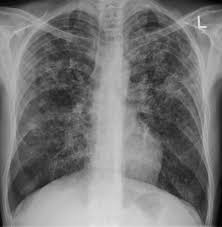The promotion of high-intensity interval training (HIIT) as a viable public health strategy has sparked intense debate within the scientific community. Critics have often challenged the suitability of HIIT for non-athletes and questioned studies that highlight its positive psychological effects and adherence rates. Now, researchers at the University of British Columbia Okanagan (UBCO) are pushing back, advocating for more civil discourse and evidence-based discussions.
Dr. Mary Jung, a professor at UBCO’s School of Health and Exercise Sciences, contends that critics have unfairly dismissed HIIT research. “In our view, critics have unfairly questioned the validity of studies that show positive psychological responses to HIIT, including enjoyment of, and adherence to HIIT as an exercise intervention,” she says.
HIIT, characterized by short bursts of intense exercise followed by recovery periods, is often associated with athletic training. However, UBCO researchers argue that it has broader applications. In their study, published in Applied Physiology, Nutrition, and Metabolism, Dr. Jung and her colleague, Dr. Kathleen Martin Ginis, examine HIIT’s effects on people with chronic conditions, different age groups, and those with limited exercise experience.
Their findings challenge the common assumption that HIIT is only suitable for supervised fitness settings or highly trained individuals. According to Dr. Jung, “Evidence suggests HIIT is just as enjoyable as moderate-intensity continuous training.” Moreover, adherence rates to HIIT are comparable to moderate-intensity exercise in both supervised and unsupervised environments, further underscoring its potential as a public health intervention.
Despite this, the debate around HIIT has become increasingly personal and contentious, with online discourse veering into attacks on researchers. “What began as an open debate on the value of HIIT as a public health strategy has now devolved into attacks on researchers,” says Dr. Martin Ginis, Director of UBCO’s Centre for Chronic Disease Prevention and Management.
Dr. Martin Ginis worries that these attacks are stifling scientific progress. “Some researchers, particularly graduate students, feel intimidated and have chosen not to pursue HIIT research due to fear of personal attack,” she notes. This chilling effect could slow advancements in exercise science, potentially undermining public health initiatives aimed at increasing physical activity levels.
The UBCO researchers emphasize that the debate should not be framed as a binary issue between high-intensity and moderate-intensity training. Instead, they advocate for respectful dialogue and a focus on finding ways to improve exercise adherence across all types of training. “Resources are better spent addressing fundamental questions about exercise initiation and maintenance than perpetuating a vitriolic and uncivil debate over the value of high-intensity versus moderate-intensity training,” Dr. Martin Ginis adds.
As the debate continues, Drs. Jung and Martin Ginis remain committed to advancing research on HIIT while fostering a culture of respect within the scientific community. They urge researchers and the public to prioritize evidence-based discussions and seek collaborative solutions to improve public health outcomes.
For more details, the study titled “But will they do it?” Challenging assumptions and incivility in the academic discourse on high-intensity interval training is available in Applied Physiology, Nutrition, and Metabolism.












